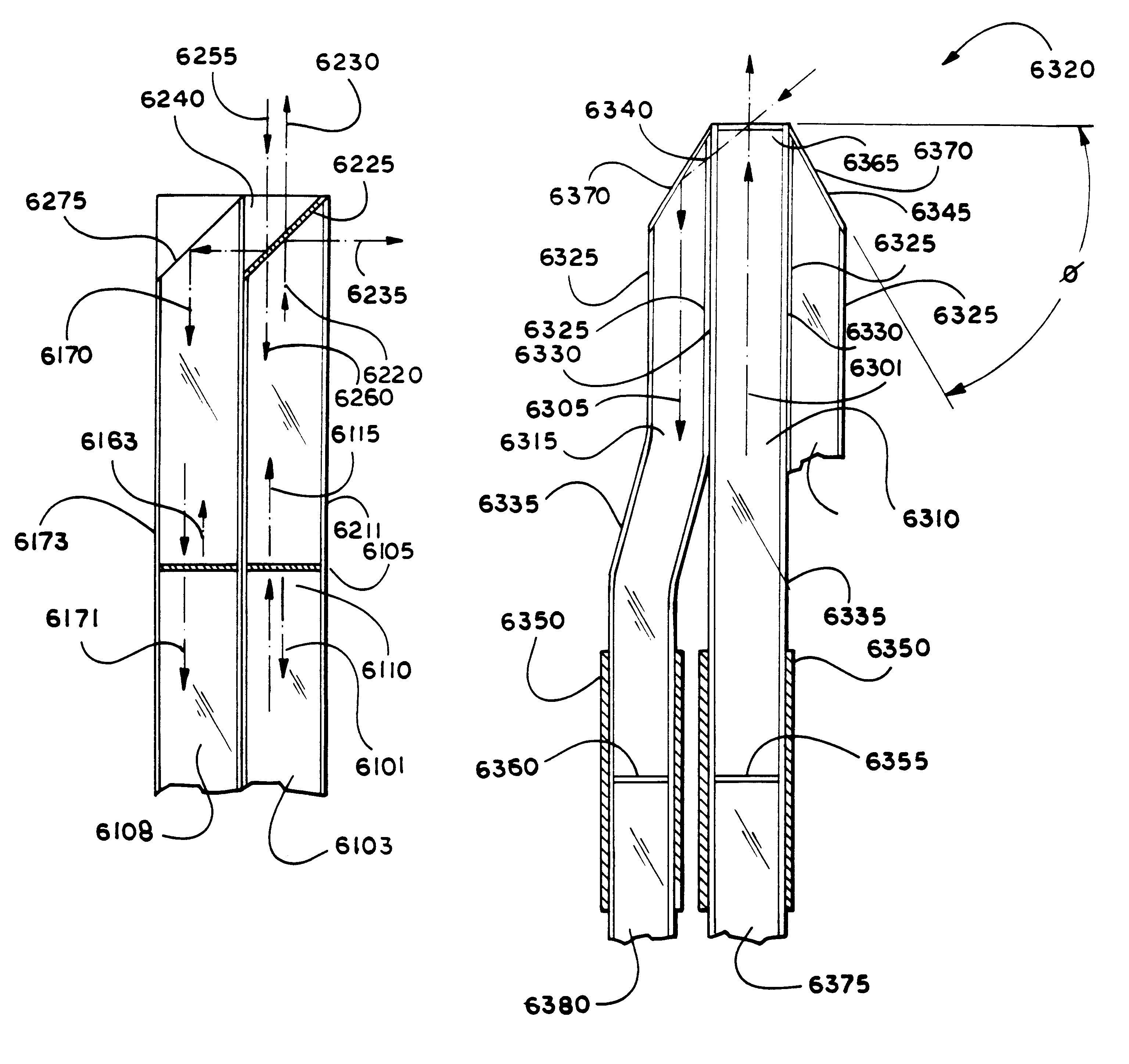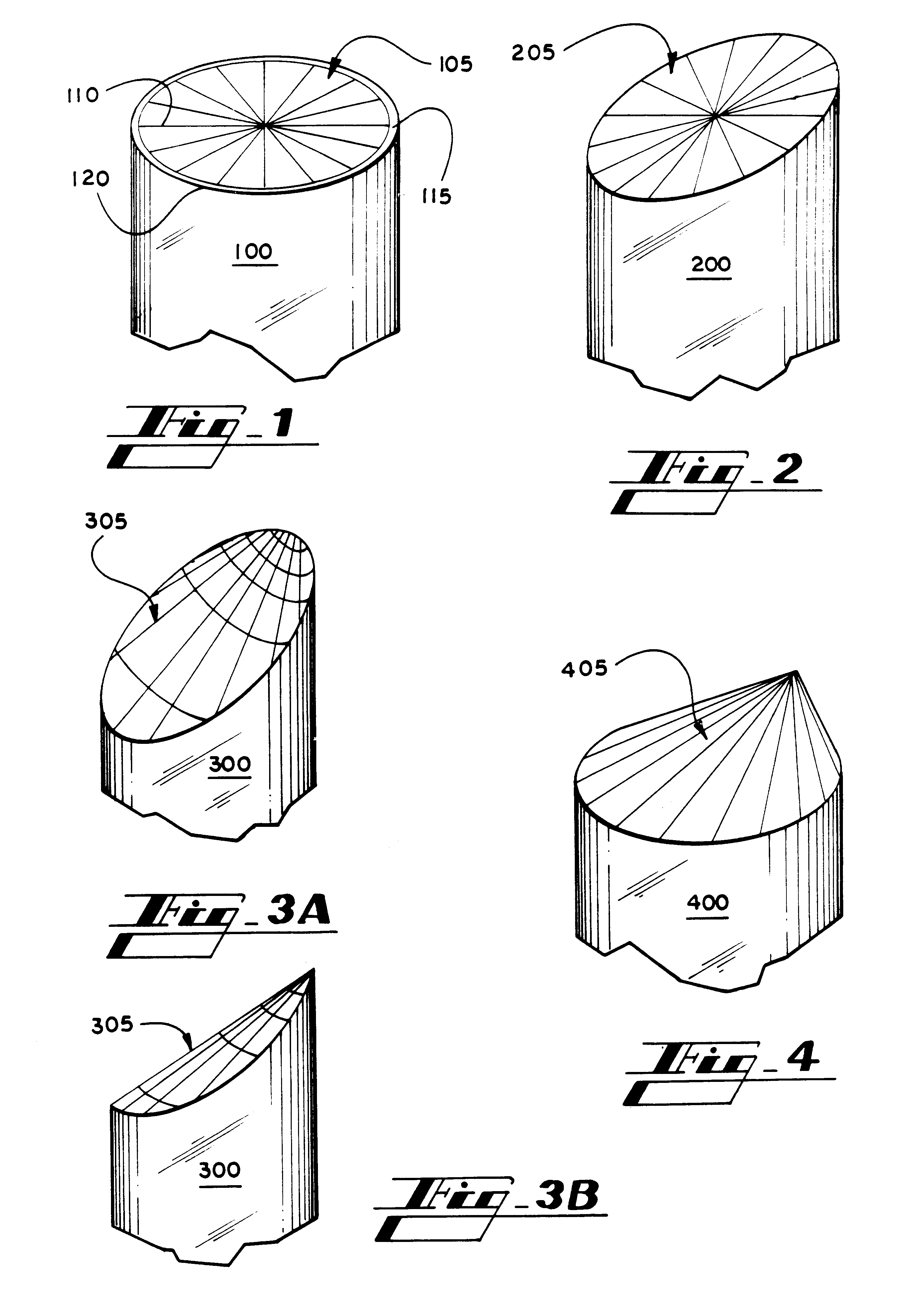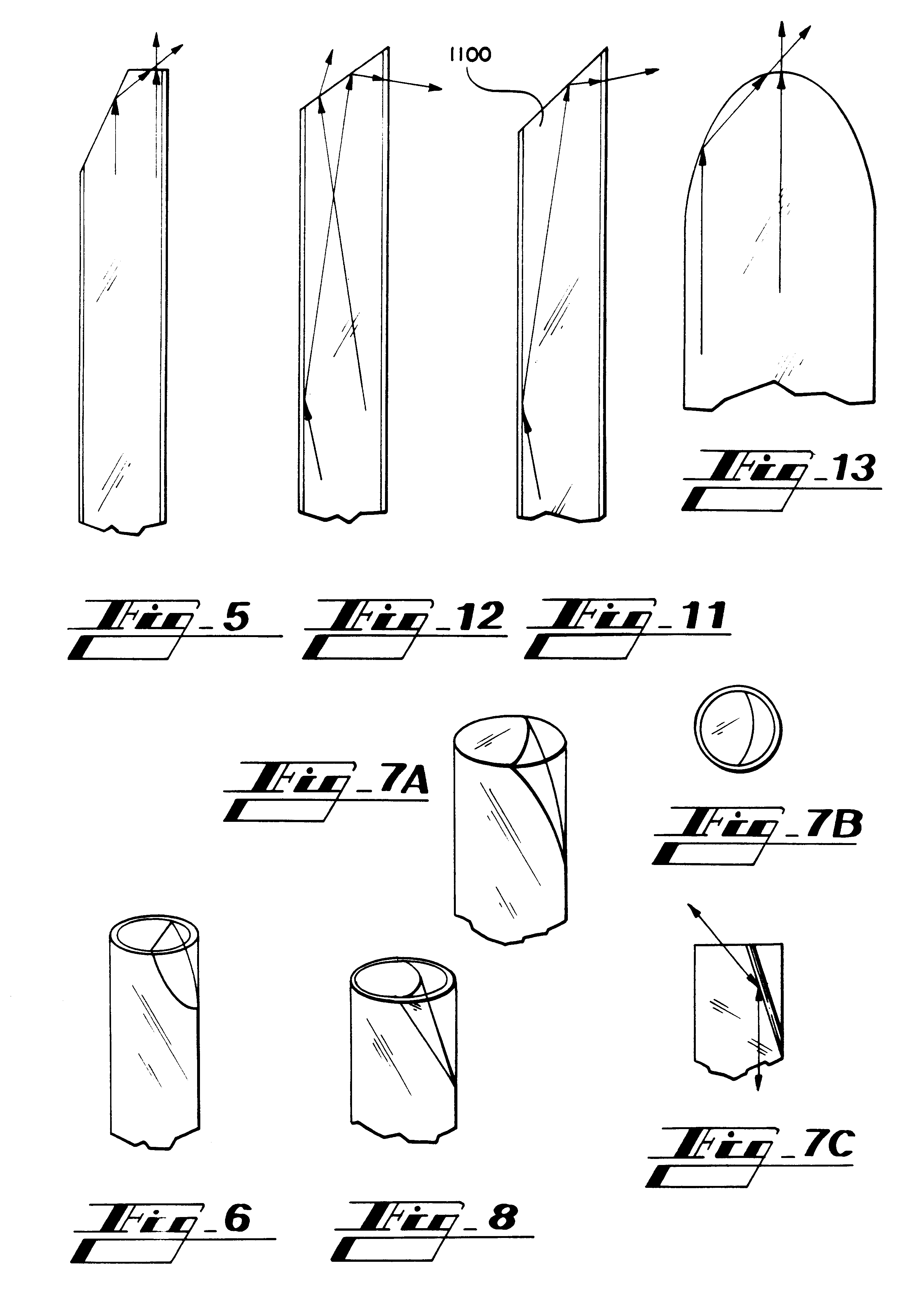The resulting low light levels require sophisticated, expensive
instrumentation and technical complexity.
In practicality, the
engineering challenges for a robust physical probe implementation are substantial.
A phenomenon known as the silica-Raman effect has proven especially troublesome for those engaged in remote
Raman spectroscopy.
The purity of the
laser light is corrupted.
In both delivery and return, undesirable silica-Raman light travels in the fibers concurrently with desirable
laser and sensor light.
A major obstacle in fiber-optic-based
Raman spectroscopy has been in separating the desirable light from the undesirable silica-Raman light.
In sophisticated instrument systems, enormous efforts, expense and other considerations are devoted to produce small, marginal performance gains in the
detector subsystem.
The lack of overlap between these regions produces numerous troublesome effects.
A second, though not entirely distinct, set of problems is associated with the
angular orientation of light rays within the illumination and collection cones.
While in certain cases this technique might be effective, in many circumstances, it is not feasible.
As the medium absorbs source light-energy, it can be irreparably damaged.
And, in addition to damage, photochemical reactions are inadvertently initiated in certain circumstances.
A second problem exists in environments that involve elastic particulate-scattering media, such as slurries, mists, aerosols, paints, and various other media.
For elastic light-scattering media, additional detrimental effects are observed.
Although the direct pathway may lie outside of the collection fiber's receptivity zone, it is incorrect to surmise that this
scattered light cannot be captured by the collecting fiber.
Unfortunately,
light scattering, particularly Rayleigh and Mie-scattering, often is a multiple event phenomenon.
Light captured by the collection fiber prior to undergoing intended interaction with the target is usually highly detrimental.
This "
stray light" severely corrupts the process of various analytical measurements.
Typically, the
stray light becomes indistinguishable from the desired light.
Assuming this quantity is an uncontrolled application variable, the effect cannot be readily eliminated by referencing of similar compensation.
However, it would be incorrect to assume the optimal target location is at a position removed from the probe end face, where the illumination and collection zones are basically in concurrence.
Unfortunately, at a distance away from the probe tip at which significant overlap occurs, the illumination beam has diverged, and its intensity has diminished.
This reflection manifests itself as
stray light and corrupts the acquired data.
The
dynamic range and characteristics of such sensors are limited by available source and
detector pattern geometries.
Unfortunately, the source beam must diverge in order to deliver illumination light into the collection fiber's zone of receptivity.
At this position, light rays incident on the fiber end face are not properly angularly oriented for collection.
This reduction in collected light is due to the fact that near the edges of the collection pattern most of the
point source rays striking the fiber end face are improperly angularly oriented for collection.
Thus, efficiency is poor.
However, the received light is a small fraction of that available.
However, the lack of ability to manipulate the
optical axis of the illumination and collection cones limits the
controllability of the measurement dynamics.
It further limits the overall ability to achieve specific application goals, such as
linearity,
dynamic range, sensitivity and related criteria.
In certain
sensing applications, the parameter under investigation responds inadequately to light of desirable wavelengths.
For example, suppose an arbitrary chemical has an
infrared signature suitable for
photonic sensor development, but the appropriate
infrared light does not readily transmit with conventional optical fibers.
If a
single fiber's end face is coated and the fiber is utilized as a bi-directional light conduit, poor isolation between delivered and collected photons can result.
Due to shortcomings associated with a flat face, parallel
fiber probe and its ability to control illumination and collection, complications arise in illuminating and collecting indicator light.
Although bundles potentially overcome some of the pre-described limitations, significant limitations remain.
And, the usage of bundles introduces additional problems and undesirable characteristics.
For the reasons set out below, these methods are limited in terms of their effectiveness for many desired Raman
instrumentation applications.
First, the required fiber materials have characteristics not suitable for high-end instrumentation application including environmental sensitivity, usage restrictions, and the generation of extraneous responses.
Second, physical laws limit the extent to which a fiber's acceptance characteristics can be extended.
Third, a fiber's delivery pattern / field-of-view can only be broadened or narrowed but not steered off axis or directed to view in a specific region.
In many cases, the delivery of widely diverging light to the
detector system is detrimental to achieving acceptable performance.
These elements are bulky, expensive, sometimes fragile, often lossy, difficult to align, and susceptible to environmental influences.
Additionally, it is difficult to engineer a highly robust
package.
For example, larger, more robust components, have higher
mass and increase
system susceptibility to mechanical shock.
If an individual lens is dedicated to each collection and illumination fiber, then the ensuing device becomes large and bulky.
Furthermore, the larger the
assembly, the further apart and less efficient the collection and illumination devices.
This stray light contaminates the measurement and is extremely detrimental.
Additionally, the introduction of expanded-beam optical elements complicates the
assembly, causes manufacturing difficulties, yields additional variability, and produces other undesirable results.
Unfortunately, in the majority of applications in which fiber optic's remote capabilities are highly sought, the materials under investigation are complex, dark, and scattering.
And for similar reasons, feeble stimulated emissions from this point cannot return to the collector
optics.
As a separate
disadvantage to this technique, response is collected from a potentially undesirably
large sample area since measurement contributions are accumulated, to a certain degree, as the beam converges to its focal point.
These devices suffer additional drawbacks including complexity, environmental sensitivity,
large size, high expense, and failure in hostile environments.
For example, unlike even the flat face, parallel
fiber probe previously analyzed, this type of device cannot be inserted into a biomedical
catheter.
Thus, the measurement is difficult or unsuccessful.
Unfortunately, this method suffers from several serious drawbacks.
The
assembly is expensive and difficult to construct.
The ensuing device also lacks
repeatability due to manufacturing constraints.
Even if the fibers are rapidly bent near the assembly's distal end, the assembly is bulky and relatively large in
diameter.
Such an assembly is much too large to be utilized in an application such as
in vivo medical.
As the fibers are bent, they become inefficient and lossy at the sharp bend resulting in light escaping from the fiber at this point.
In addition, bending the fibers to create a probe results in exceeding the minimum bend limitations for most optical fibers.
The fiber is subsequently prone to failure and suffers increased sensitivity to environmental influences.
Several problems are associated with this approach and limit its effectiveness.
Therefore, media such as fluids, fluid-filled matrix,
biological tissue, and melts typically provide insufficient characteristics to achieve the requisite
refractive index differential.
This delicate protrusion is susceptible to physical or mechanical damage.
However, use of a window causes numerous problems.
The assembly encompassing fiber, fiber
mount, window, window housing, and sealing mechanism is expensive and difficult to construct.
The necessity of the sealed chamber also forces substantial increases in the size of the assembly.
Bonding and sealing the window to the
metal housing presents numerous difficult
engineering challenges.
In many instances, the window material has undesirable spectral characteristics.
On the
optical fiber scale, positioning the fiber tip even this distance from the physical target often correlates to excessive
light intensity losses.
Accomplishing this feat requires a complex means to adjust the distance and lock the assembly in place.
As previously described, the shaped end face is mechanically feeble and prone to physical damage.
Thus, the assembly is prone to damage not only during positioning but also as a result of
thermal expansion, vibration, and general operations.
The reflection aspects are often highly disadvantageous.
For many applications, this back propagated light is significantly detrimental.
The window reflections also tend to interfere with elements adjacent to the optical fiber.
Light captured in this manner potentially mixes with and contaminates the desirable light.
Undesirable light tends to bounce around in this chamber amplifying and exasperating the described stray light problem.
Thus, extreme pressures are required to generate sufficient force to cause the fiber to
piston back into its connector and fail.
Therefore, it is susceptible to breakage.
Unfortunately, these materials not only suffer from the pre-described drawbacks but also have high refractive indices.
Another drawback to relying on refractive end faces results from the nature of the refractive effect, which limits the extent to which light can be manipulated.
Due to the nature of
refraction, light cannot be aggressively steered off axis to achieve optimal response.
This method suffers from several drawbacks.
This light is prone to back propagation within the
large core fiber and returns to the collection fibers as stray light.
Secondly, as the source light traverses the large-core fiber segment, detrimental signals are often generated.
Unfortunately, the large-core fiber accumulates the Raman-
scattered light and efficiently waveguides it to the collection fibers where it is mixed with the desired target light.
Fluorescence generated within the large-core fiber is likewise delivered to the collection fibers and corrupts the measurement process.
 Login to View More
Login to View More  Login to View More
Login to View More 


